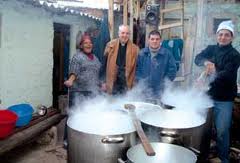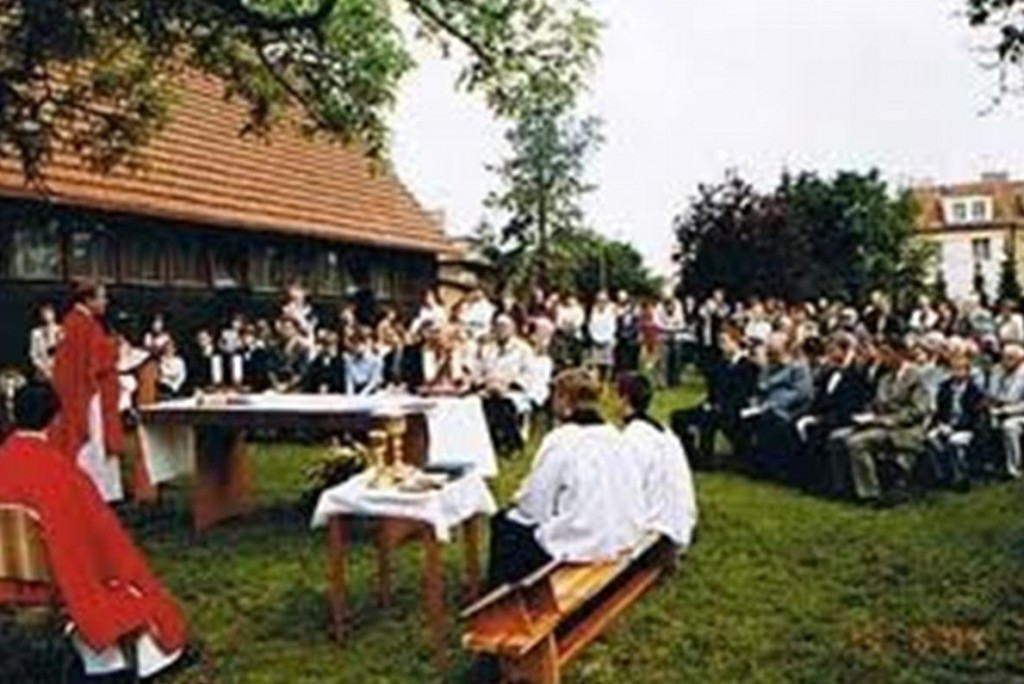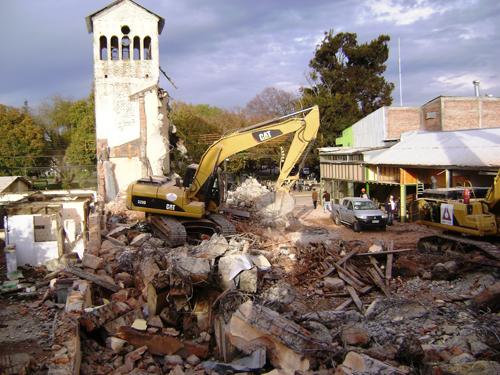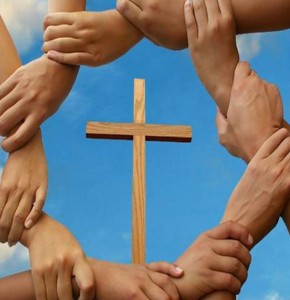6 - THE CHURCH AS MARGINAL KINGDOM:
Images of the Future Church
Images of the Future Church
I found signs of renewal more in parishes and among the laity than in church leadership. These renewed parishes, however, are marginal, far from the administrative centers of church power. These marginal parishes are communities of communities. Their house-churches or small groups meet once a week, but they are not islands of piety closed to the world, on the contrary. Each small community is a network of networks, as each members comes with his/her own network of friends, colleagues, co-evangelizers and converts. They are scripture-centered, both collectively and individually; it is the bible that is their source of inspiration and wisdom. For them, the church is the local church; they have little interest in institutional politics, being more Christ-centered than conservative or liberal. They are both ecumenical and missionary. In a pluralistic societies with a plurality of religious preferences and sexual orientations, their bible-centeredness helps them overcome social and religious taboos. Mission is a priority, not as propaganda but as outgrowth of their personal fulfilment.  For most people, the church is mainly the local church. The bishop comes once a year for confirmations and inspection; his visits have little or no impact on parish life. The church of Rome is seldom in news, and more often than not, in for bad news. The local church is a hive of activities, days in and days out. That’s where there is religious ed, adult ed, meetings, a soup kitchen, social services, and fun activities. The Sunday liturgies are fiestas of music and singing, all sharing the sacred word and bread. The parish is a community of communities of a few hundred people who all know one another. Priests are transferred, bishops visit once a year, but the parish as community of communities spans generations. Globally, the church can be represented by a circle in which 99.95% is taken by the laity and .05% by the clergy. In this circle, the .05% dot is often too small to be visible; moreover, for most people this dot is not at the center by at the periphery of their lives. To the extent that the hierarchy thinks in terms of managing and controlling rather than empowering, there are still too many priests today, even if only one for 5,000, 10,000 or 50,000; what is needed is not more sacramental administrators but more empowering priests. Dynamic parishes are empowering ones, that is, communities of an empowered laity. 
Their spirituality of these dynamic parishes can only be inferred from interviews. What seems special about these communities is their vision of the church as marginal kingdom rather than ecclesiastical power base. Their inspiration may come – very indirectly – from Ignatius of Antioch and the Didache rather than neo-Scholasticism or papal encyclicals. They know that the kingdom of God is different from that of the world, a distinction that is often lost when religion becomes highly institutionalized. The followers of the Way know that there are two ways, that of light and that of darkness. As stated by Ignatius of Antioch, “There are two different coinages, so to speak, in circulation. God’s and the world’s, each with its own distinctive marking. Unbelievers carry the stamp of the world, while the faithful in love bear the stamp of God the Father, through Jesus-Christ. Unless we are ready and willing to die in conformity with His passion, His life is not with us.” Ignatius lived and wrote like a martyr, but thanks to God most people do not have to follow that radical way. Light is opposed to darkness, but not like day is opposed to night: there is light even in darkness. In these churches, the kingdom of God is light in the midst of darkness, or rather, the transformation of darkness into light. It is an incarnational spirituality of transformation of the world, not one of rejection. It is a spirituality that is “incarnated” in marriage, work, leisure, and community. It is quite different from the traditional spirituality of redemptive suffering which has no answers to the problems of family and society. Redemptive suffering can give meaning to individual suffering but it does not address or try to change its causes. The Incarnation came to change the world order, from one of power and wealth for self gratification, to one of agapaic service leading to social change, at least at a small scale. This incarnational spirituality has always been present in the church in its education, health, and charity works, but it was found mainly in institutes of religious life; today it is more dynamically found in parishes and the laity. Lay incarnational spirituality (or theosis) calls for the active transformation of family, work, career, parenthood, and power games, not just passive acceptance of the will of God. Lay people develop their own spirituality, which can be witnessed in their weekly meetings animated by lay leaders. Is this a minority view? Certainly, as practicing Catholics are a minority in the church today: 22% in the U.S., and around 10% in Europe, Australia, and Latin America; these percentages are likely to drop further within one generation or so. If by then the church will still be “business as usual,” the view of parishes as seeking a kingdom of a different kind of power may be quite attractive. In short, sociology must look at religion today as a social movement created by networks, for instance evangelicalism and the charismatic movement. Ecclesiology must look at the church from below. More importantly, ecclesiology must look at the church of the future, if not it is mainly a light for the past. Discussion questions: |
 Unless something drastic happens, the U.S. church is likely to continue on the path of decline and reach the level of attendance in Europe and Australia, that is, around or below 10%. A recent reaction from a young priest was, “My generation grew up with it and we are used to it. That’s the way it is; we have no problem with it.” In other words, not much will be done about it. Moreover, if the theological profile of recently ordained priests is of any indication, the main attitude of church attenders and new priests will be one of loyalty to the institution the way most Catholics were before Vatican II: submit, receive the sacraments, and pray for vocations.
Unless something drastic happens, the U.S. church is likely to continue on the path of decline and reach the level of attendance in Europe and Australia, that is, around or below 10%. A recent reaction from a young priest was, “My generation grew up with it and we are used to it. That’s the way it is; we have no problem with it.” In other words, not much will be done about it. Moreover, if the theological profile of recently ordained priests is of any indication, the main attitude of church attenders and new priests will be one of loyalty to the institution the way most Catholics were before Vatican II: submit, receive the sacraments, and pray for vocations.  Sociologically, dynamic local churches are networks, or rather, networks of networks of networks; that’s the way revolutions are made in the 21st century. Networks are invisible yet often irresistible: they may cover the world with darkness or bring light into the night. We are very far now from geographical parishes and hierarchical structures of authority; these are really pre-Darwinian concepts.
Sociologically, dynamic local churches are networks, or rather, networks of networks of networks; that’s the way revolutions are made in the 21st century. Networks are invisible yet often irresistible: they may cover the world with darkness or bring light into the night. We are very far now from geographical parishes and hierarchical structures of authority; these are really pre-Darwinian concepts.